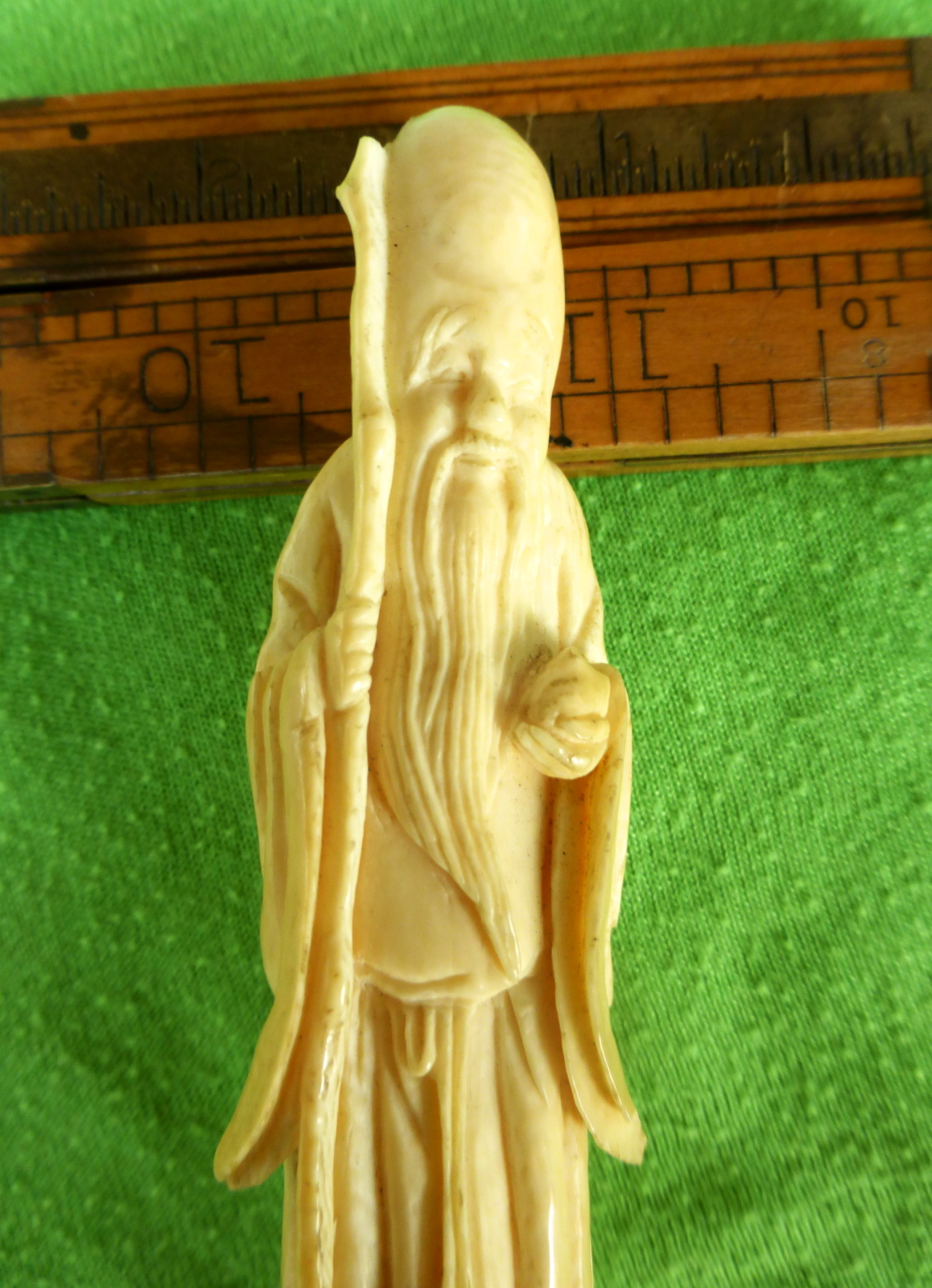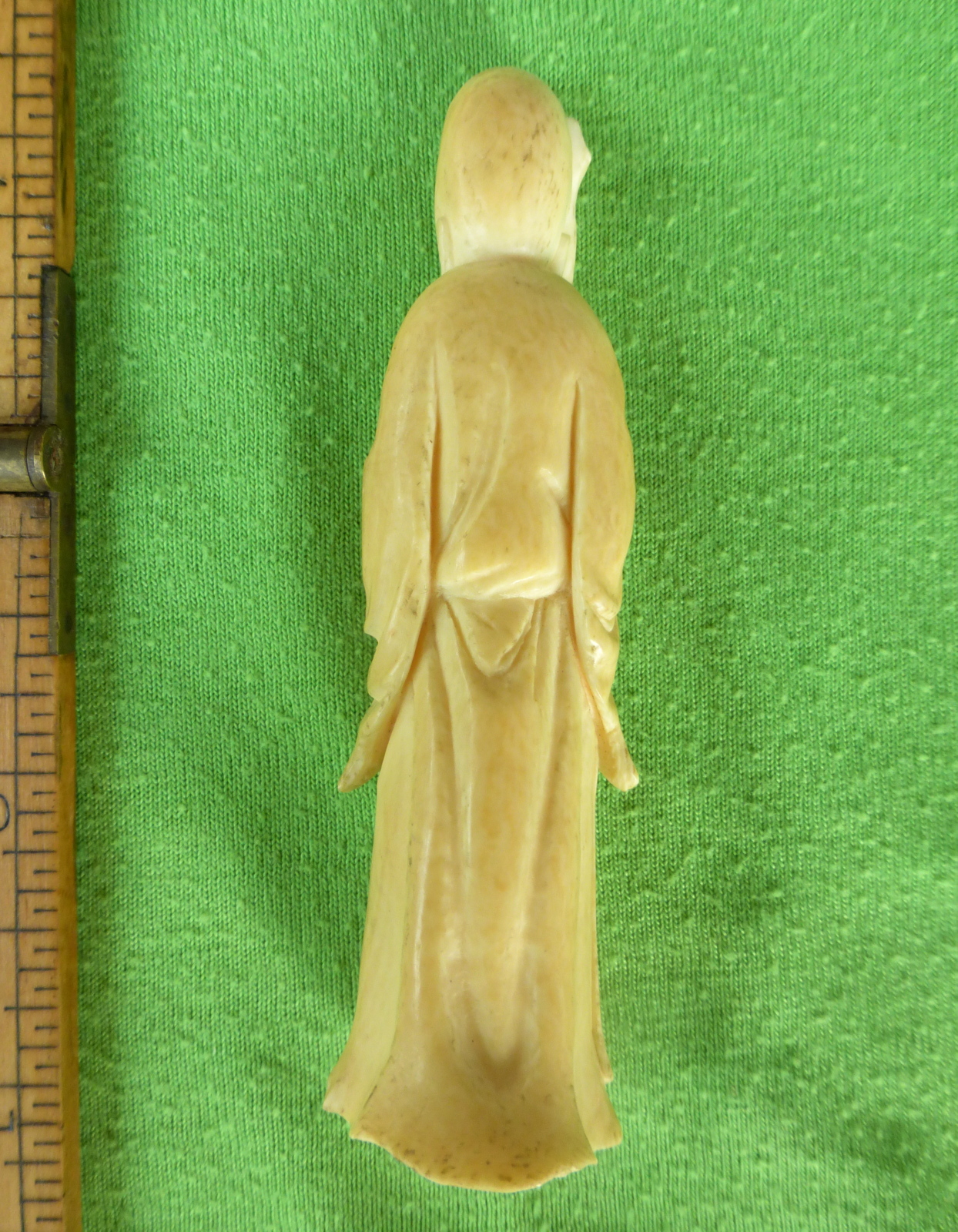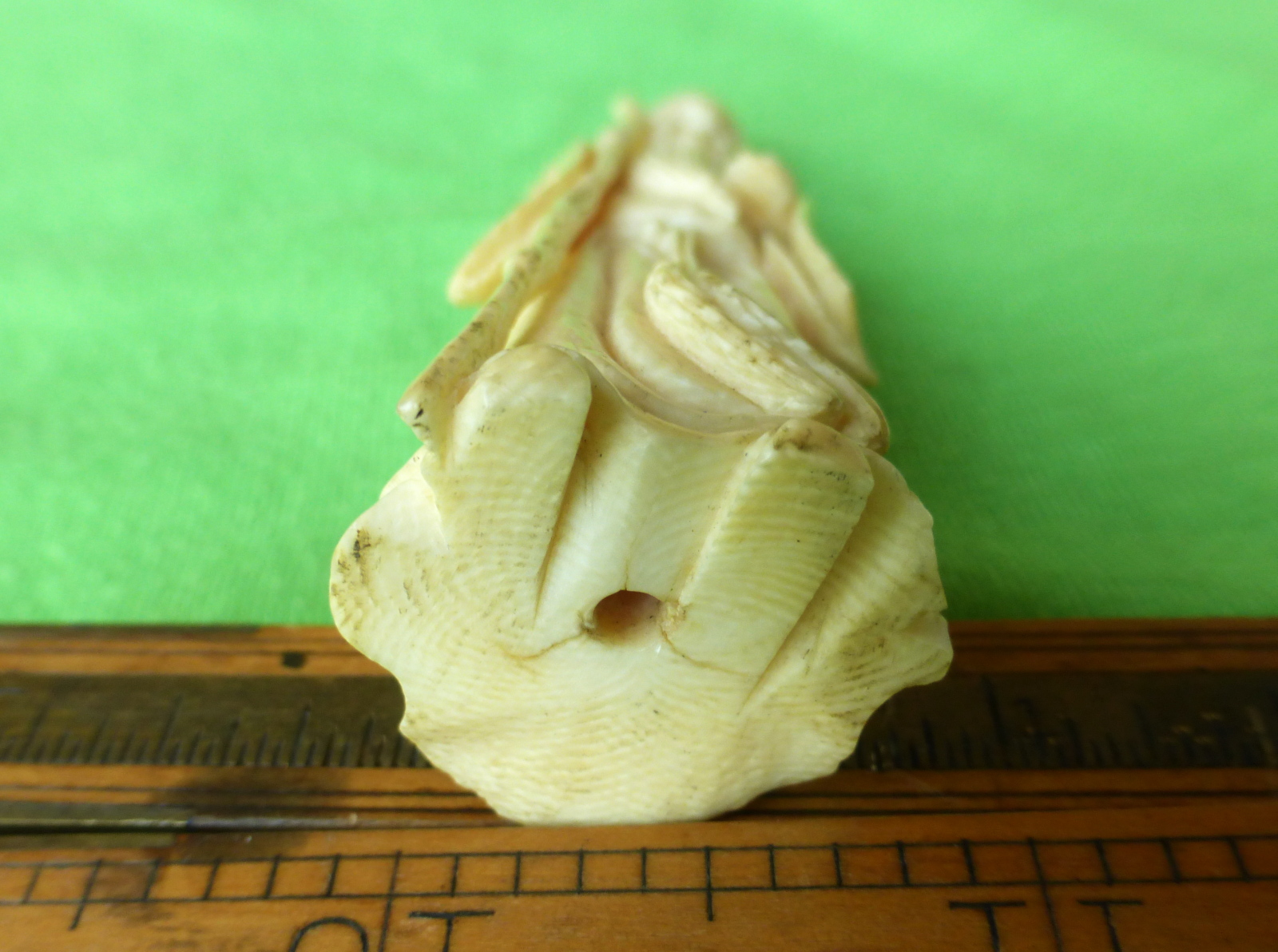Hello, and thank you. I have a couple of bone/ivory statues, and I have questions about both of them. My dad brought them back from the Far East after the war, in 1948.
First, the small one (3 1/4″ tall). It has a hole in the bottom, and appears to be hollow inside. Why is that? Does that mean this is a fake, or an imitation?
Any information at all would be greatly appreciated.
Thanks. /Brian
Because Schreger lines can only be seen at the cellular level !! You have to have at least a 10X power magnification to see them !! Or a jewelers loupe,,microscope ect !! If they can be seen as you have shown them,, then they are cut lines !! Ivory has been faked for the last 100 years !! It was a common thing to do since ivory is more valuable than bone or vegetable ivory !!
I did double check with a friend on another forum who collects this type item and this is his reply !!
i mart, I think the poster could be right, the bottom looks ok for ivory in my opinion. The hole is drilled I believe, to attach the figure to a wooden base. The figure is Chinese, not Japanese , the person depicted is Shou-Lao, the god of longevity. The date given (before 1948) sounds right, it could be late Republic period. The quality of the carving is not very good, these were mass produced for tourists…
What magnification did you use when you took the bottom pic ??
It’s just a good point and shoot set on macro. All the pictures are similar scale, and there is a ruler included for size. Why do u ask?
Thats because natural bone is hollow and is filled with marrow !! The marrow is what is eaten by most people !! Because of the small size this is probably natural bone !! Usually ox bone !! These little figures are put on a wooden stand to hide the cut marks and sold to tourists and soldiers !! Were quite common after WWll when Japan was trying to recover from the war !! These and other crafts were cottage industries and helped the families feed themselves during tough times !! To check and see if its natural bone or resin,, get a strong magnifying glass and look at the grain along any straight part of the figure !! Bone will have a fairly straight grain,, resin will show no grain,, !! These are often called faux ivory !!
Did you take a close look at the 3rd picture, the one of the base?





Oh please.
From The U.S. Fish & Wildlife Service Forensics page:
“A photocopy machine is used to capture Schreger angles from mammoth and elephant ivory cross-sections. The cross-section is placed on the glass plate of a photocopy machine. A blue photocopy transparency sheet may be placed between the object and and the glass plate to enhance the detail of the photocopy. Enlargement of the photocopy may also improve the image and facilitate the measurement process.”
And once again from me:
“Saw marks do not continue uninterrupted into depressions.”
Thank you for your help. But you seem more invested in being right, even though your information is suspect.
Hungry families churned these out as a cottage industry? Do you really think the average household had carvers like this? Look at the Schreger lines again, and imagine what kind of saw action could make those lines – there is none. Sorry, but my limited research has been more reliable.